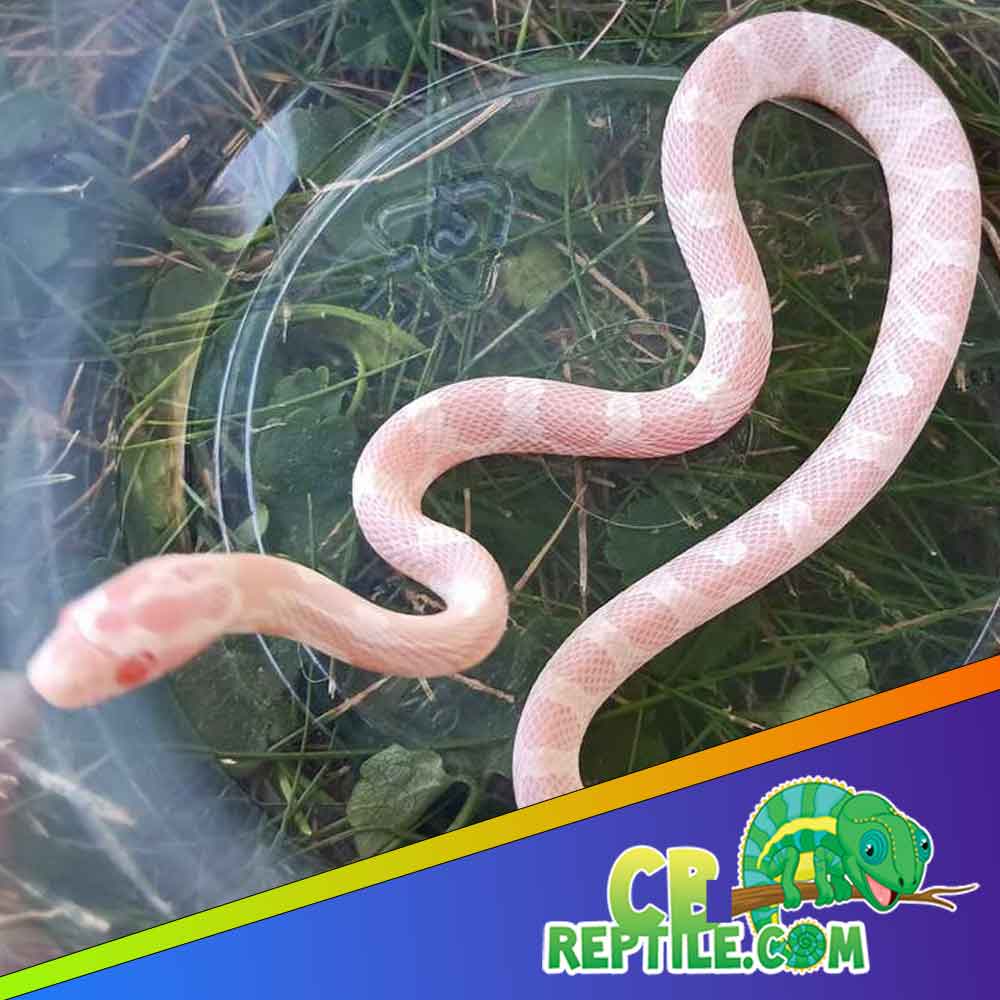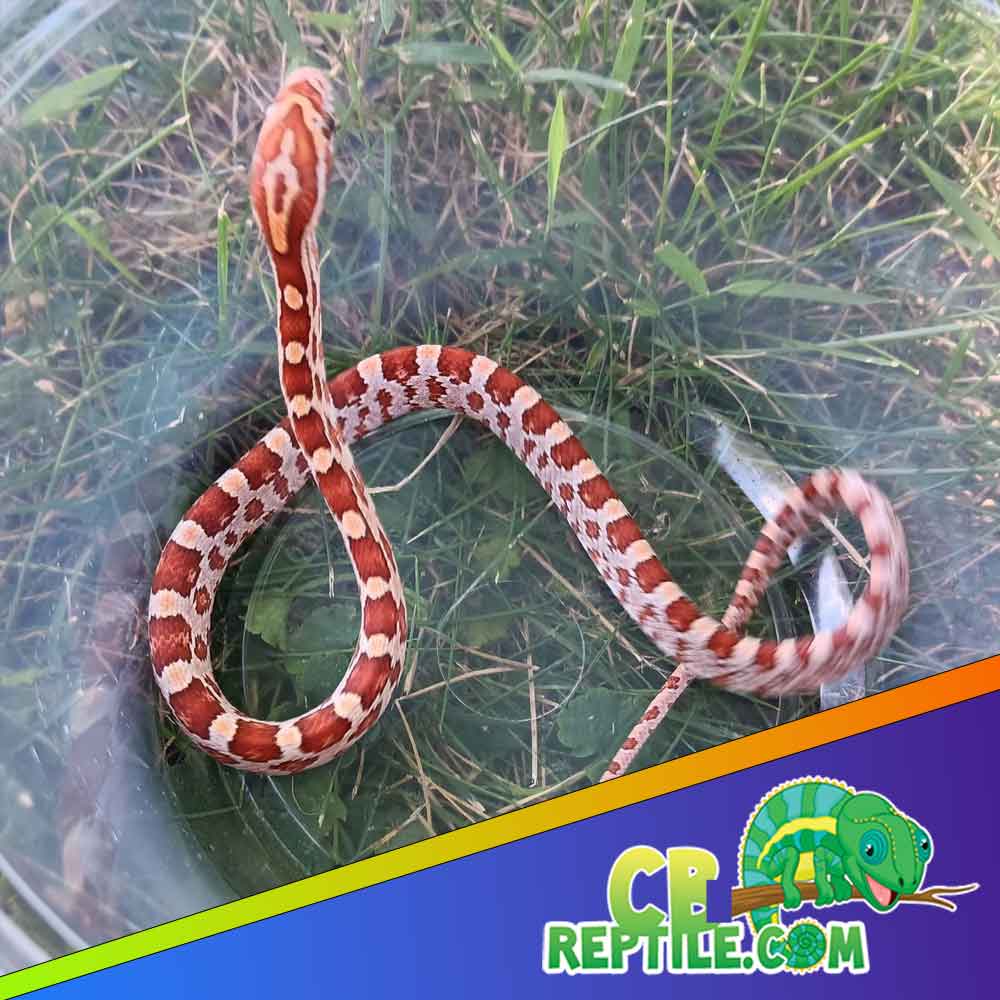
Corn Snake Care Guide: A Happy Journey into Reptile Keeping

Why Choose a Captive-Bred Corn Snake?

Choosing a captive-bred corn snake sets you and your new pet up for success. Captive breeding ensures healthier animals free from parasites and disease, with temperaments more suited to handling. Wild-caught snakes often face stress and health issues that can be avoided altogether when you start with a responsibly bred corn snake. This is why buying from a trusted corn snake breeder like CB Reptile is so important.
A breeder with years of experience understands proper nutrition, genetics, and early handling, which makes your new snake much easier to raise and bond with. When you purchase from CB Reptile, you’re getting more than a pet—you’re gaining the confidence that your corn snake was raised with care from day one.
Habitat Setup: The Perfect Home for Your Corn Snake

A proper habitat is essential to keeping your corn snake healthy and stress-free. Corn snakes are active, curious creatures that thrive in enclosures designed with their needs in mind. Here’s what you’ll need to create the perfect setup:
- Enclosure size: A baby corn snake can start in a 10–20 gallon terrarium, while adults require a minimum of a 40-gallon enclosure. Larger is always better as long as hides and clutter are provided.
- Material: Glass tanks or PVC reptile enclosures work well. Secure lids are crucial, as corn snakes are notorious escape artists.
- Substrate: Aspen shavings, paper bedding, or cypress mulch provide a safe and comfortable base. Avoid cedar or pine, as these can be toxic.
- Hides: Place at least two hides—one on the warm side and one on the cool side. Snakes feel safe when they have a snug retreat.
- Climbing branches & decor: Corn snakes love to explore, so add branches, cork bark, and foliage to enrich their environment.
Heating & Temperature Gradient
Reptiles are ectothermic, meaning they rely on external heat sources to regulate body temperature. A proper temperature gradient allows your corn snake to choose the warmth it needs throughout the day.
- Warm side: Maintain 85°F under a heat source (such as an under-tank heater or ceramic heat emitter).
- Cool side: Allow a cooler end around 75°F.
- Nighttime: Temperatures can safely drop to 70°F.
Heat sources should always be regulated with a thermostat to prevent dangerous overheating. Never use heat rocks, as they can burn your snake.
Lighting & Humidity
Corn snakes do not require special UVB lighting, but providing a regular day/night cycle with a light source keeps them in rhythm. Humidity should remain around 40–50%, with a slightly higher boost during shedding. A shallow water dish large enough for your snake to soak in helps maintain hydration and aids with shedding.
Nutrition: Feeding Your Corn Snake
Corn snakes are carnivores that thrive on a diet of appropriately sized rodents. Captive-bred snakes from CB Reptile are already feeding on frozen/thawed prey, which makes mealtime simple and safe.
- Babies: Feed a pinkie mouse every 5–7 days.
- Juveniles: Offer fuzzies or hoppers every 7 days.
- Adults: Provide an adult mouse or small rat every 7–10 days.
Always thaw frozen rodents thoroughly and warm them to body temperature before feeding. Never feed live prey, as it can injure your snake. Use long feeding tongs to present food and keep feeding outside of the main enclosure when possible to avoid substrate ingestion.
Raising a Baby Corn Snake
Baby corn snakes are fun, curious, and surprisingly hardy when raised correctly. From the moment they hatch, proper care sets the stage for a lifetime of health and happiness. When you bring home a baby corn snake from CB Reptile, you’re starting with a healthy, captive-bred animal that has already been eating and shedding successfully.
Provide a smaller enclosure at first to reduce stress and make feeding easier. Keep hides snug so your baby feels secure, and offer pinkie mice on a regular schedule. Handle your baby gently a few times per week after it has settled in, gradually increasing sessions as it grows confident. Over time, you’ll develop a calm, friendly pet that enjoys interacting with you.
Why Buy From a Real Corn Snake Breeder?
The difference between buying from a reputable breeder and a chain pet store cannot be overstated. Chain stores often receive snakes of unknown origin, sometimes wild-caught, with poor early care and questionable health histories. This can lead to stress, feeding issues, or even medical problems down the road.
By purchasing from CB Reptile, you are supporting a family-run business that specializes in reptile husbandry. They raise each animal with attention to detail, ensuring it is feeding properly, hydrated, and acclimated before being offered for sale. With CB Reptile, you can feel confident knowing you are bringing home a snake raised by experts who truly care about the well-being of their animals.
Enrichment & Handling
Corn snakes are naturally inquisitive and benefit from gentle handling and enrichment. Handling your snake a few times per week builds trust and allows you to appreciate its calm nature. Always support the snake’s body, avoid sudden movements, and never handle immediately after feeding to prevent regurgitation.
Enrichment inside the enclosure—branches, tunnels, foliage—gives your snake opportunities to climb, hide, and explore, keeping them mentally and physically stimulated.
Lifespan & Commitment
Corn snakes can live 15–20 years in captivity with proper care. This is a long-term commitment and a wonderful journey of companionship. With the right setup, diet, and care, your corn snake will reward you with years of fascinating behavior and beautiful patterns.
Final Thoughts
Corn snakes are the perfect ambassadors for reptile keeping: friendly, manageable in size, and easy to care for when given the right environment. By setting up a proper habitat, maintaining the correct temperatures, offering nutritious meals, and handling your snake gently, you’ll enjoy a rewarding relationship for many years to come.
Most importantly, starting with a healthy, captive-bred baby from a trusted source like CB Reptile makes all the difference. Their dedication to quality and passion for reptiles ensures that your corn snake has the best possible start in life.
